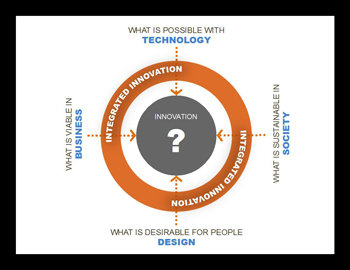101 Design Methods: A Structured Approach for Driving Innovation in Your Organization

The first step-by-step guidebook for successful innovation planning
Unlike other books on the subject, 101 Design Methods approaches the practice of creating new products, services, and customer experiences as a science, rather than an art, providing a practical set of collaborative tools and methods for planning and defining successful new offerings. Strategists, managers, designers, and researchers who undertake the challenge of innovation, despite a lack of established procedures and a high risk of failure, will find this an invaluable resource. Novices can learn from it; managers can plan with it; and practitioners of innovation can improve the quality of their work by referring to it.
Amazon Exclusive: Author Vijay Kumar on The Five Basic Insights That Drive Innovation in Organizations
Today we are flooded with the term “innovation” everywhere -- in magazines, journals, conferences, books, blogs, boardrooms, and news. Yes, with this level of attention being paid to “innovation”, it feels like “innovation has arrived!” It has made a splash in the world, especially in the world of business! But, what does this really mean to an organization? How does this energy and enthusiasm impact a person’s daily activities at work?
Innovation wins customers, creates competitive advantage, and increases profit for organizations. But it’s also a notoriously risky venture to enter into, resulting in extremely low success rates and reluctance on the part of investors and decision-makers to support it. Does innovation have to be so risky and unpredictable?
I’m attacking these issues head on by articulating a vision of a reliable, repeatable, and structured approach for driving innovation in organizations.
This vision is shaped by five basic insights about innovation.
1. Innovation is a discipline, not a mystery.
Practicing innovation is not a mystery, contrary to what most people believe. Innovation is a discipline. It can be planned, practiced, improved, and excelled at. It can be formalized as a disciplined process. We can approach the practice of innovation (creating new products, services, and customer experiences) like a science, with a set of practical and rigorous methods, tools, and frameworks.
2. Innovation process needs clear modes, mindsets, and methods.
Modes provide innovators the focus necessary to deal with complex innovation challenges. Mindsets provide them with clear ways of thinking to fully understand challenges and appropriately conceive responses. Methods facilitate step-by-step actions to reach desired outcomes and end goals. This way of framing structured innovation is particularly valuable for innovators to effectively work together as teams.

3. Four primary forces shape innovations.
The primary forces that shape successful innovations are business, technology, design, and society. Business force relates to the question of what is viable in the market -- where are the market gaps and how to fill them. Technology force looks for what is possible with new emerging technologies and how to create new offerings. Design force asks the question of what is desirable for people and how to create humanized solutions. Society force is focused on what is sustainable for the community and the environment. Integrating these forces produce innovations that deliver higher user and economic value.
4. Innovations need collaboration and teamwork.
Innovations use structured and disciplined processes in which all stakeholders participate. For example, engineers, technologists, business analysts, strategists, researchers, designers, social scientists, community members, and even end-users participate in the process. Collaborative thinking at many levels of the organization is needed to conceive reliable solutions.
5. The same generic process benefits many diverse projects.
A generalized innovation process -- comprehensively conceived for observing, reframing, ideating, prototyping, and planning -- can be used to develop a wide variety of concepts like products, services, experiences, messages, channels, business models, or strategies. It can also support the needs of various types of organizations -- corporate businesses, social organizations, governments, entrepreneurs, or networked organizations.
Tidak ada komentar:
Posting Komentar